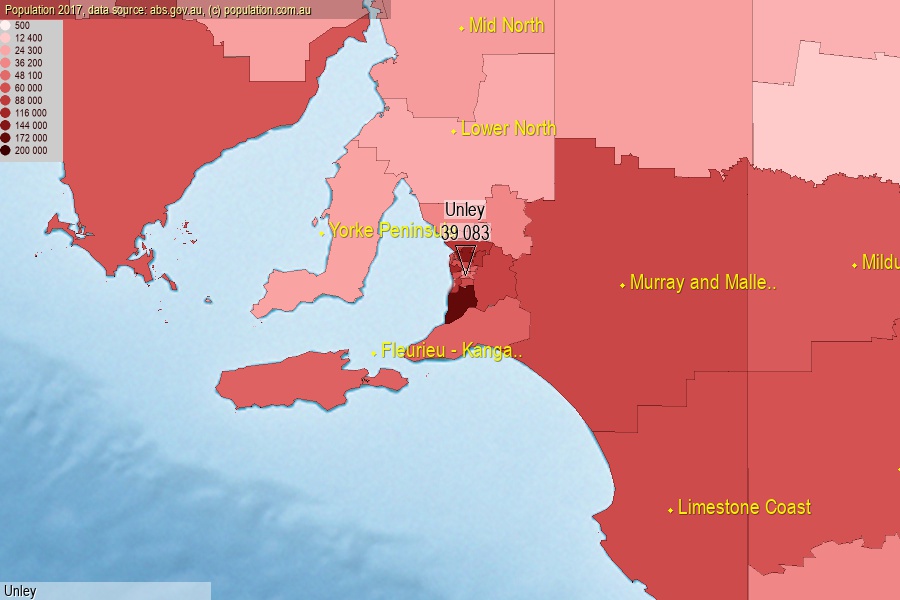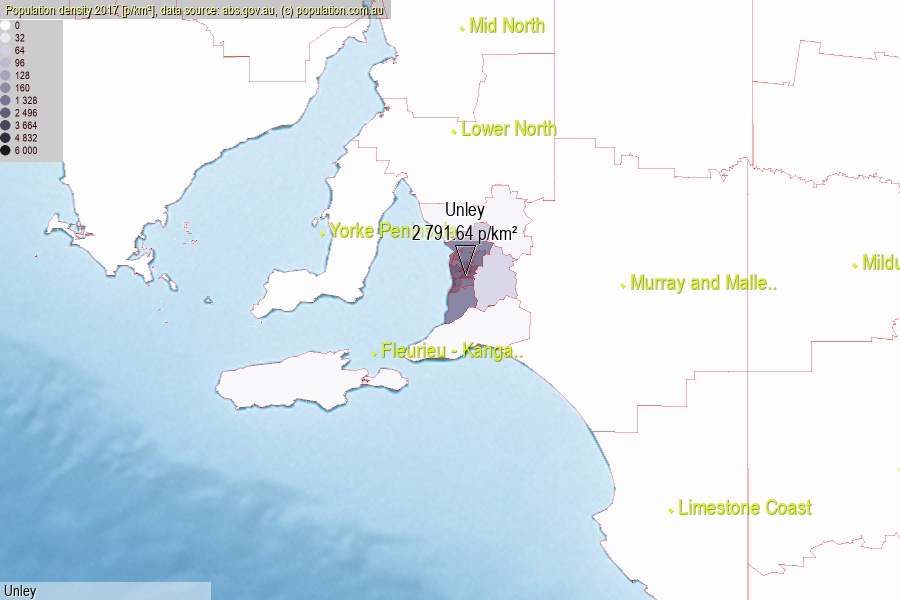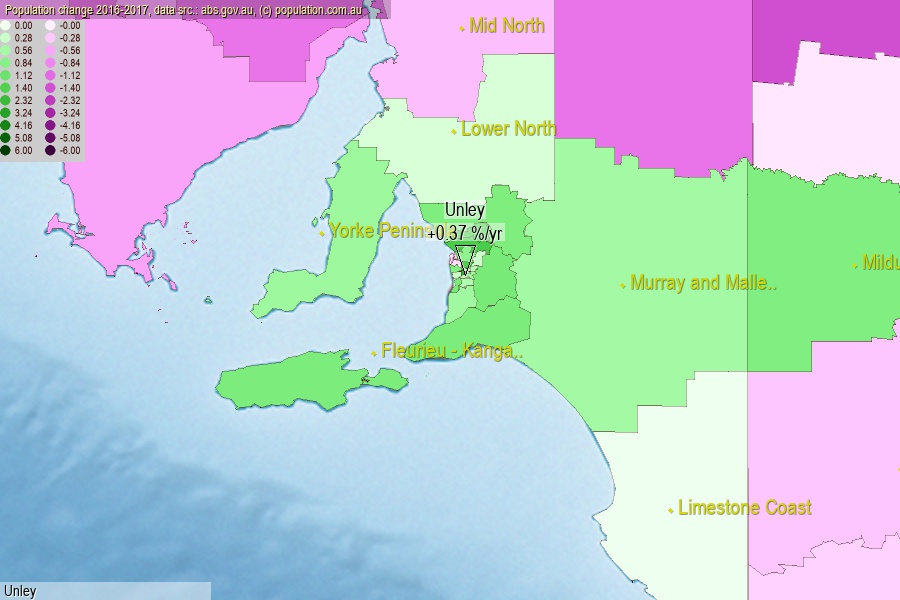 population.com.au
population.com.auLast official estimated population of Unley (as Statistical Area Level 3) was 39 083 people (on 2017-06-30)[2]. This was 0.16% of total Australian population and 2.255% of SA population. Area of Unley is 14.00 km², in this year population density was 2 791.64 p/km² . If population growth rate would be same as in period 2016-2017 (+0.37%/yr), Unley population in 2025 would be 40 254. [0]



Click to enlarge. Unley is located in the center of the images.
Population [people], population density [p./km²] and population change [%/year] [2]
View borders » (new window) [4]
[1991-1992] -0.56 %/Y
[1992-1993] -0.36 %/Y
[1993-1994] -0.75 %/Y
[1994-1995] -0.72 %/Y
[1995-1996] +1.02 %/Y
[1996-1997] +0.31 %/Y
[1997-1998] +0.27 %/Y
[1998-1999] -0.15 %/Y
[1999-2000] -0.46 %/Y
[2000-2001] +0.22 %/Y
[2001-2002] +0.24 %/Y
[2002-2003] +0.49 %/Y
[2003-2004] -0.03 %/Y
[2004-2005] +0.40 %/Y
[2005-2006] +1.10 %/Y
[2006-2007] +0.81 %/Y
[2007-2008] +0.82 %/Y
[2008-2009] +0.77 %/Y
[2009-2010] +0.57 %/Y
[2010-2011] +0.11 %/Y
[2011-2012] +0.36 %/Y
[2012-2013] +0.10 %/Y
[2013-2014] +0.37 %/Y
[2014-2015] +0.33 %/Y
[2015-2016] +0.30 %/Y
[2016-2017] +0.37 %/Y
[0] Calculated with linear interpolation from officially estimated population
[1] Read more about SA3 and Australian Statistical Geography Standard (ASGS) on abs.gov.au
[2] Population data from Australian Bureau of Statistics (Population and density: 2017; change: 2016-2017)
[3] Digital Boundaries: Australian Statistical Geography Standard (ASGS) 2016.
[4] Border coordinates are simplifyed using Ramer-Douglas-Peucker algorithm.